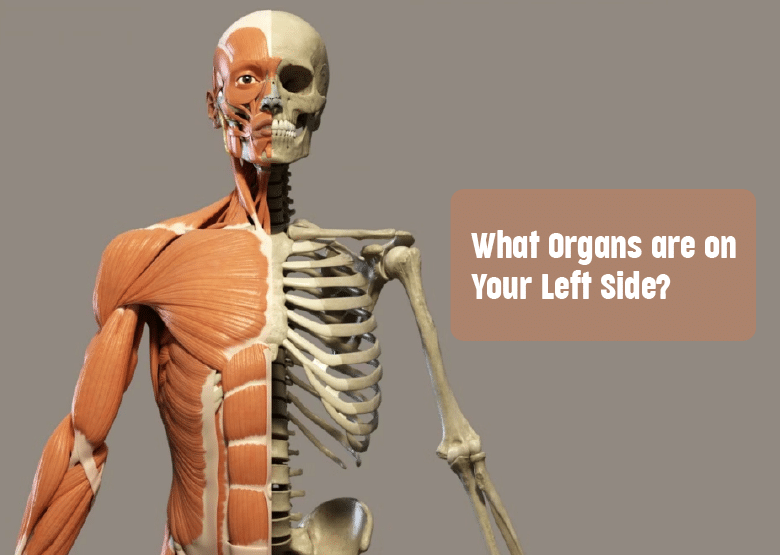
The human body exists as an interesting combination of symmetric elements and individual characteristics which become most interesting during the Anatomy of Left Side of Body. The two sides of the body look like exact copies yet they harbor essential distinctions which influence our pain experience and our physical movements and our perception of the world.
People now primarily use their smartphones to search for health information when they sense abnormal feelings on one side of their body because we live in a mobile-first world. Knowledge about your left-body anatomy allows you to satisfy your curiosity while enabling you to decide when medical attention is needed and where to find urgent care near you.
The following seven scientifically proven facts will transform your understanding of the left side of your body.
1. The Heart’s Position Is Slightly Left of Center
The majority of the heart exists just to the left side of the body’s centerline within the chest cavity. The slight leftward placement of the heart makes people associate any kind of chest pain or pressure on the left side with potential heart problems.
Why it matters:
- Left-sided chest pain occasionally signals heart-related emergencies.
- The origin of the pain may stem from either the digestive system through acid reflux or the muscular system.
- Knowing your heart position allows you to better identify symptoms while always keeping potential heart signals in mind.
Mobile health resources must include immediate access to emergency guidelines and medical facility locations for patients who experience chest pain.
2. The Left Lung Is Smaller Than the Right
The left lung contains less volume than its counterpart to create space for the heart which lies underneath. The left lung contains two lobes while the right lung has three which results in minor differences in lung volume.
This asymmetry is important when considering breathing issues or lung-related pain on the left side. While many lung problems affect both sides, localized symptoms on the left might require targeted evaluation.
3. The Spleen Lives Exclusively on the Left
Positioned beneath the ribs the spleen functions as a blood filter while recycling red blood cells along with supporting immune system operations. Spleen injuries remain uncommon but they lead to intense pain that occurs in the left upper abdominal area or left shoulder region.
Knowledge about its position serves to determine which abdominal traumas and particular infections need immediate medical intervention. On mobile medical platforms diagrams showing organ positions must be scrollable while maintaining fast loading speeds and adaptable to different screen sizes to enable users to identify symptoms precisely.
4. Left-Side Muscles Support Dominance and Balance
Your hand dominance does not affect how left-side muscles operate to establish posture and coordinate movement and maintain equilibrium. The right side muscles perform differently than the left side muscles because of sports activities and daily routine patterns and injury-related adjustments.
Muscle function knowledge enables people at all activity levels to stop asymmetrical strain from causing pain or mobility decrease.
5. The Left Hemisphere of the Brain Controls the Right Side of the Body
The left hemisphere of your brain primarily directs body functions that affect the right side of your body. The inclusion of this topic in a left-side discussion occurs because brain injuries to the left hemisphere create powerful effects which result in muscle weakness or paralysis on the body’s opposite side.
The human body demonstrates its remarkable complexity through the phenomenon of neural crossover which proves how deeply interconnected our systems truly are.
6. The Left Kidney Sits Slightly Higher Than the Right
The human body uses kidneys to filter waste material and maintain fluid equilibrium yet they exist at different heights. The right kidney receives its lower position because the liver applies downward pressure to it. Kidney infections together with stones and injuries produce pain that manifests more strongly on one particular side.
Responsive illustrations on mobile-friendly health guides enable users to quickly identify potential causes of flank or back pain by showing kidney locations.
7. Certain Pain Patterns Require Immediate Attention
The source of left-sided discomfort includes both non-serious causes and serious conditions which need prompt medical attention. For example:
- Sudden, intense chest pain radiating to the arm or jaw
- Sharp abdominal pain after an injury
- Shortness of breath paired with left-sided chest pressure
- Unexplained swelling or weakness on one side
Your life depends on immediate access to the nearest urgent care or emergency department when you experience these symptoms. Digital health platforms need to embed location services which enable users to request help through one tap.
Why Mobile-First Health Content Matters
When you feel unusual pain or sensation on one side of your body, you’re unlikely to grab a medical textbook—you’ll grab your phone. That’s why health content about anatomy should be:
- A clear structure results from using headings and bullet points together with brief explanations that allow readers to skim content easily.
- A clear structure results from using headings and bullet points together with brief explanations that allow readers to skim content easily.
- The website functions properly on different device sizes including small smartphone displays and tablets.
- The emergency tools include click-to-call numbers and maps and symptom checkers which integrate with the platform.
Maintaining a simple URL structure enhances both search engine optimization and user confidence.
Final Thoughts
The left side of the body contains specific organ arrangements which differ from the right side while maintaining distinct functions and critical life-saving capabilities. Understanding these distinctions enables you to better understand your health status and detect abnormal sensations.
The combination of anatomical understanding with mobile-first health resources guarantees users complete information access from spleen functions to urgent care locations during medical emergencies.
The integration of anatomical knowledge with modern responsive digital tools allows people to transition from curiosity to prevention and timely action.